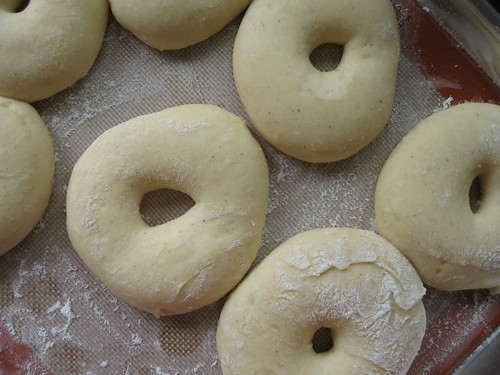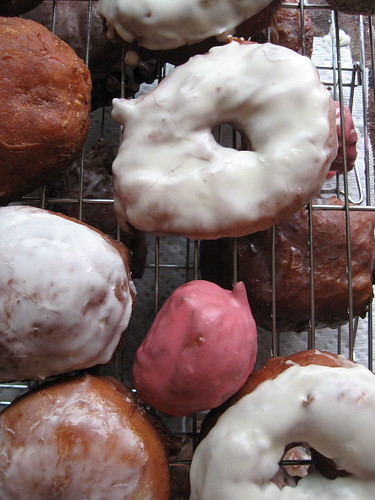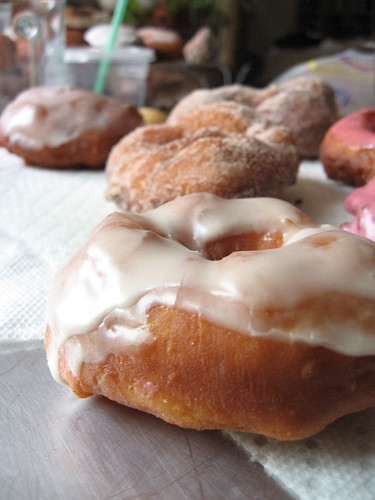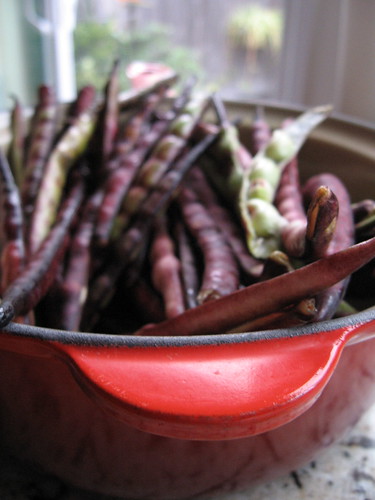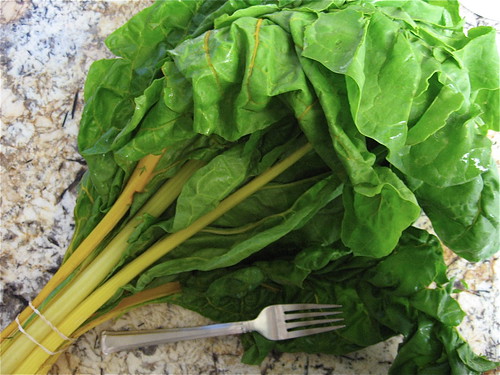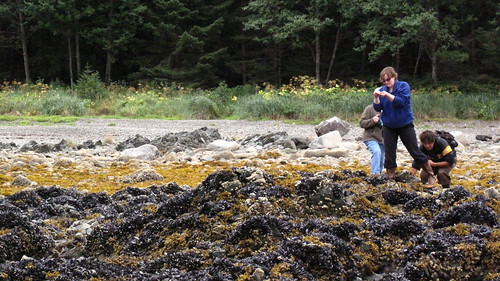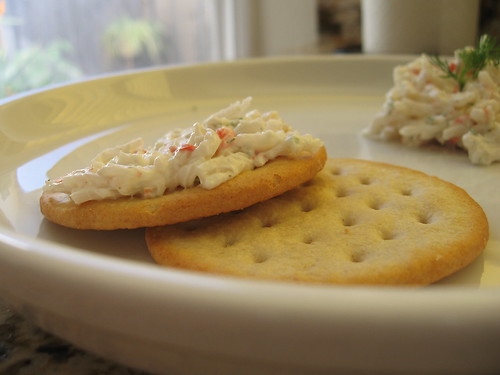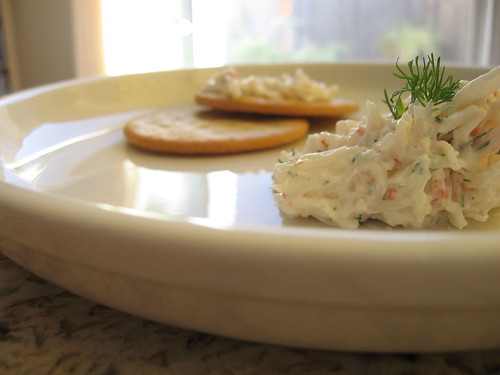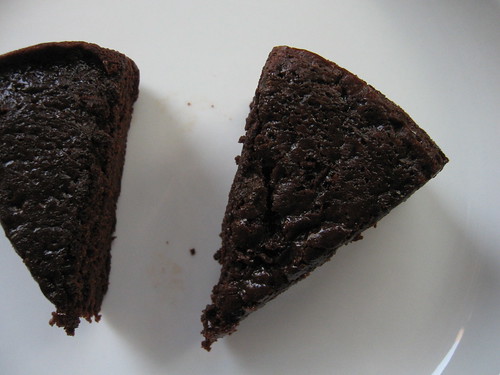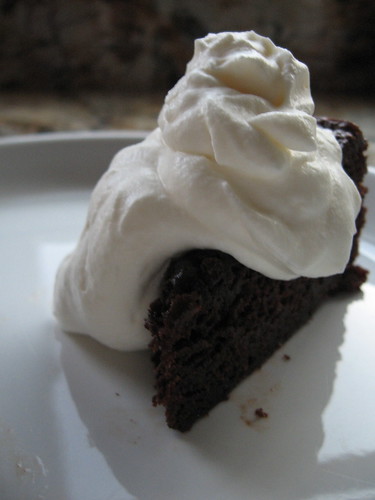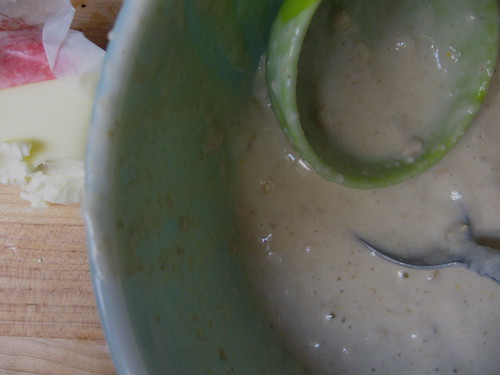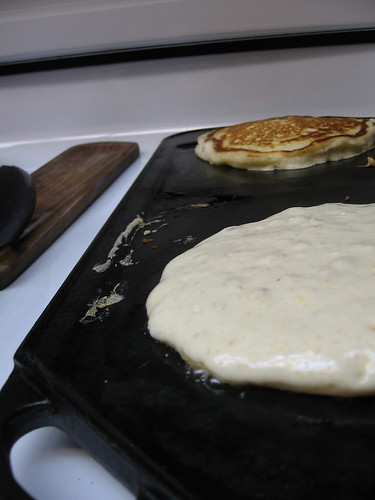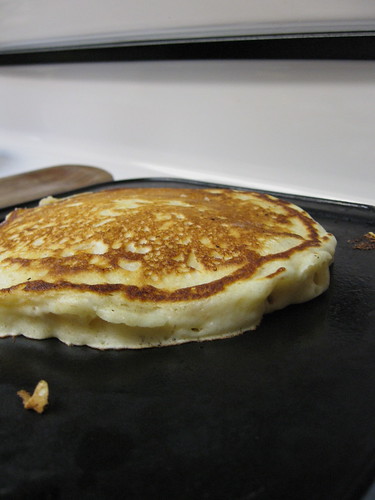
A birthday is always a good reason for cake, no?
After
my cake-off a couple weeks ago, I settled on a recipe that I liked: an adapted version of
this recipe, made with strong coffee and bittersweet chocolate. I first frosted it with a simple bittersweet ganache, but after a few bites decided that the flavors were fighting for dominance. A simple whipped cream was fantastic; a soft counterpoint to the assertive cake.
In the end, I chose a mild espresso buttercream, an adapted version of
this frosting recipe. I've never been a fan of buttercreams—they are generally cloyingly sweet and much too rich—but the sweetness of this frosting is tempered by both the espresso and the bitter-but-not-too-sweet cake.
My cake-decorating skills aren't the sharpest—the cake resembles
a shoddy spackle job from 1973 more than anything else—but modern art food styling aside, this cake was a perfect end to the day.
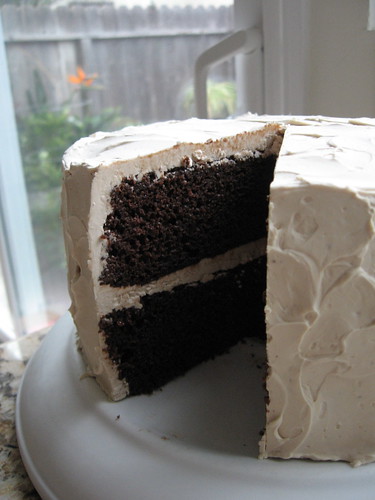
The cake itself is marvelous and grown-up, with a tender crumb and a complex flavor. The coffee,
chocolate's favorite supporting cast member, is only identifiable in the cake if you're looking for it, but it makes the bittersweet chocolate stand up and get noticed. In fact, the only thing I would change would be to increase the coffee in the buttercream.
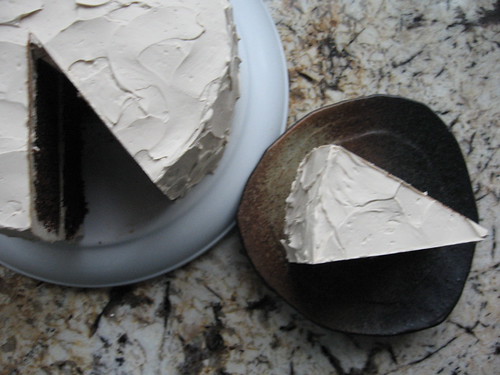 Bittersweet Chocolate Cake with Espresso Buttercream
Bittersweet Chocolate Cake with Espresso Buttercream
Adapted from
Epicurious and
Baking: From My Home to Yours
I used an Americano-style coffee in the cake batter, as I only have a small stovetop espresso maker. This recipe makes 3 eight-inch layers, 2 ten-inch layers, or 3 dozen cupcakes. My third eight-inch pan was mysteriously swallowed by my pantry, so I made 2 eight-inch layers and a dozen cupcakes.
Note: in my experience, this cake is vastly improved from an overnight nap in the refrigerator before frosting; just make sure to let the cakes come to room temperature fully wrapped before frosting.
Cake
3 ounces bittersweet chocolate (I use Valrhona)
1 ½ cups hot coffee, or 6 ounces espresso mixed with water to make 1 ½ cups
3 cups sugar
2 ½ cups unbleached flour
1 ½ cups natural unsweetened cocoa powder (I ran out and used a 9 ounce for $1.99 box from Trader Joe's—and it was remarkably good)
2 teaspoons baking soda
¾ teaspoon baking powder
1 ¼ teaspoons salt
3 large eggs
¾ cup canola oil
1 ½ cups buttermilk, shaken
¾ teaspoon vanilla
Buttercream
1 cup granulated sugar
5 large egg whites
1 ½ cups (3 sticks) unsalted butter, completely softened
¼ cup strong espresso, cooled completely
1 teaspoon pure vanilla extract
To make the cakes
If you are using cake pans, butter the pans, line the bottoms with parchment paper, then butter the parchment; set aside. If making cupcakes, line the pans with cupcake liners or butter and dust with additional cocoa powder.
Coarsely chop the chocolate and pour the hot coffee over. Let cool, stirring occasionally, until the chocolate is completely melted. Set aside.
Sift together the sugar, flour, cocoa powder, soda, baking powder, and salt into a large bowl; set aside. Place the eggs in a very large bowl and beat with a hand mixer on medium speed until pale yellow and slightly thickened, 3-5 minutes. Beating constantly, slowly add the oil, buttermilk, coffee mixture, and vanilla. Add the dry ingredients in one go, beating just until combined; to avoid overbeating, stop the machine a bit early and use a stout spatula to finish the job.
Bake just until a skewer or toothpicks poked into the center comes out clean, 20-30 minutes for cupcakes, 50-70 minutes for cakes. Cool completely in pans on racks, then remove from pans. Peel the paper from the bottom of the layers, wrap tightly in plastic wrap, and keep at room temperature or refrigerate overnight. Let come to room temperature before frosting.
To make the frosting
Place the sugar and egg whites in a large heatproof bowl over a pan of simmering water. With a hand mixer at medium speed, beat constantly until hot to the touch, 5 to 6 minutes. The sugar should be dissolved and it should look like a shiny, thick foam. Remove from the heat.
Beat on medium speed until the meringue is well-cooled, 6 to 7 minutes. Add the butter one stick at a time, beating until smooth. (Note: the butter should be completely softened)
Beat the buttercream on medium-high speed until thick and very smooth, Anywhere from 6 to 25 minutes. If it looks thin or curdles, keep beating until it comes together - I've heard of buttercreams taking up to 45 minutes of solid beating to come together, so if it looks like a failure, give it a good long time before you give up on it.
On medium speed, beat in the espresso a little at a time, then the vanilla. The frosting should be thick, shiny, and smooth. Cover with plastic wrap and set aside.
Store the cake in the refrigerator. For the neatest slices, cut while cold and let come to room temperature on individual plates.
Serves 8-12 as a two-layer 8" cake, 14-16 as a three-layer
